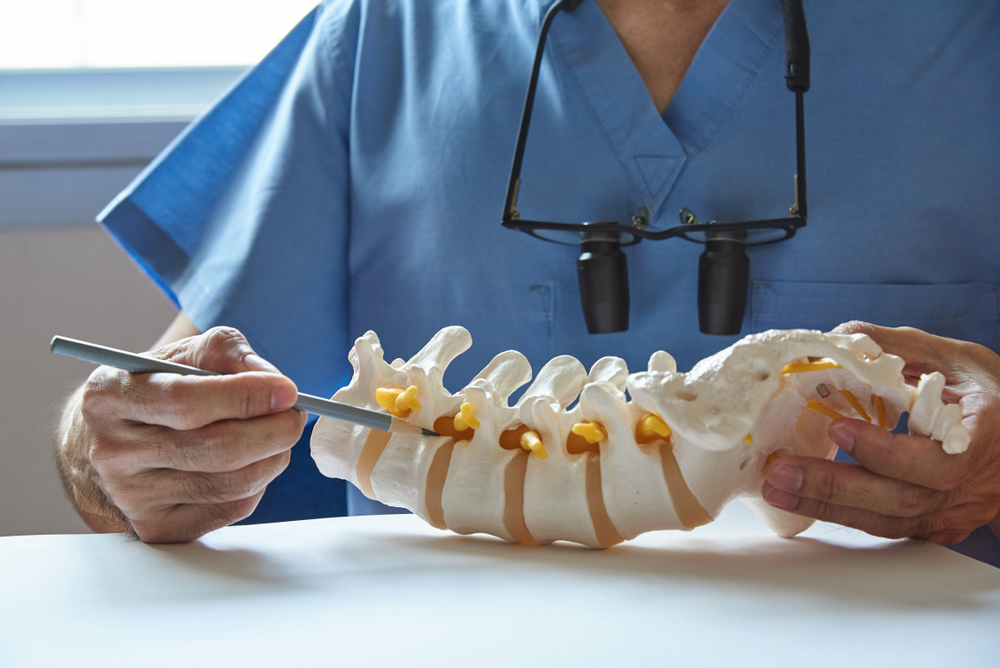PLIF vs TLIF: What's the Difference Between These Two Types of Spine Surgeries?
- Desert Spine & Scoliosis Center

- Jun 27, 2023
- 3 min read

It can sometimes be hard to differentiate between different types of surgical spinal medical procedures, for example, PLIF vs TLIF. It can be easy to confuse the two, as the acronyms are so similar.
Spinal fusion surgery is a complex procedure designed to treat a variety of spinal conditions, including degenerative disc disease, spinal stenosis, and spinal instability. One of the crucial aspects of understanding this procedure is recognizing the different techniques used to achieve successful outcomes. Two commonly employed techniques are Posterior Lumbar Interbody Fusion (PLIF) and Transforaminal Lumbar Interbody Fusion (TLIF).
Let’s look at the intricacies of PLIF and TLIF. Ultimately, the determination of TLIF vs PLIF will be made with your surgeon based on your individual medical needs.
What is Posterior Lumbar Interbody Fusion (PLIF) Surgery?
Posterior Lumbar Interbody Fusion (PLIF) surgery is a spinal fusion technique used to treat various conditions affecting the lower back, such as
degenerative disc disease
spinal instability
PLIF is performed to alleviate pain, stabilize the spine, and restore spinal alignment.
During a PLIF procedure, the surgeon accesses the spine through an incision in the back (thus posterior), typically in the lumbar region. In some cases, PLIF can be performed as a minimally invasive surgery using smaller incisions and special instrumentation.
The approach involves removing a portion of the lamina (the bony arch of the vertebra) to access the spinal canal. This allows the surgeon to decompress the spinal nerves and create space for the interbody cage or spacer.
Next, the intervertebral disc, which is likely the cause for your leg pain (for example), is removed. This disc space is then filled with a cage-like device packed with bone graft material. The bone graft serves as a biological scaffold, facilitating the fusion process between the adjacent vertebrae. The fusion creates a solid bridge, or "interbody fusion," which stabilizes the spine and promotes the growth of new bone.
To provide additional stability, the surgeon may also use screws, rods, or plates to fixate the affected vertebrae, preventing movement during the healing process. Once the desired alignment and stability are achieved, the incision is closed, and the recovery phase begins.

What is a Transforaminal Lumbar Interbody Fusion (TLIF) Procedure?
Transforaminal Lumbar Interbody Fusion (TLIF) is also a surgical technique commonly employed to address various spinal conditions, particularly in the lower back. Like PLIF, TLIF aims to alleviate pain, stabilize the spine, and promote fusion between adjacent vertebrae.
During a TLIF procedure, the surgeon approaches the spine through an incision made on one side of the back. This unilateral approach allows for targeted access to the affected disc space and nerve roots. The surgeon carefully removes a portion of the lamina and the facet joint, which provides access to the spinal canal and nerve roots.
Unlike other fusion techniques, TLIF involves the removal of the intervertebral disc from one side, rather than from the front or back. This allows the surgeon to directly decompress the spinal nerves and provide relief from associated symptoms. After disc removal, a cage-like device filled with bone graft material is inserted into the empty disc space.
As we mentioned before, TLIF is a less invasive procedure. As we explain on our website, your surgeon “will begin by making a small midline incision in your back so that the spinal canal can be accessed. Using minimally invasive tools and techniques including real-time X-ray (fluoroscopy), they will gently separate the back muscles with as little cutting as possible.”
Which is best for me?
There’s no simple answer to which procedure is best for you. There are a number of factors to consider, including:
Condition and location of spinal pathology
Surgeon's expertise and experience
Patient-specific factors (age, overall health, lifestyle)
You’ll want to discuss these with your surgeon and determine if you should pursue PLIF vs. TLIF surgery.
_PNG.png)



Comments